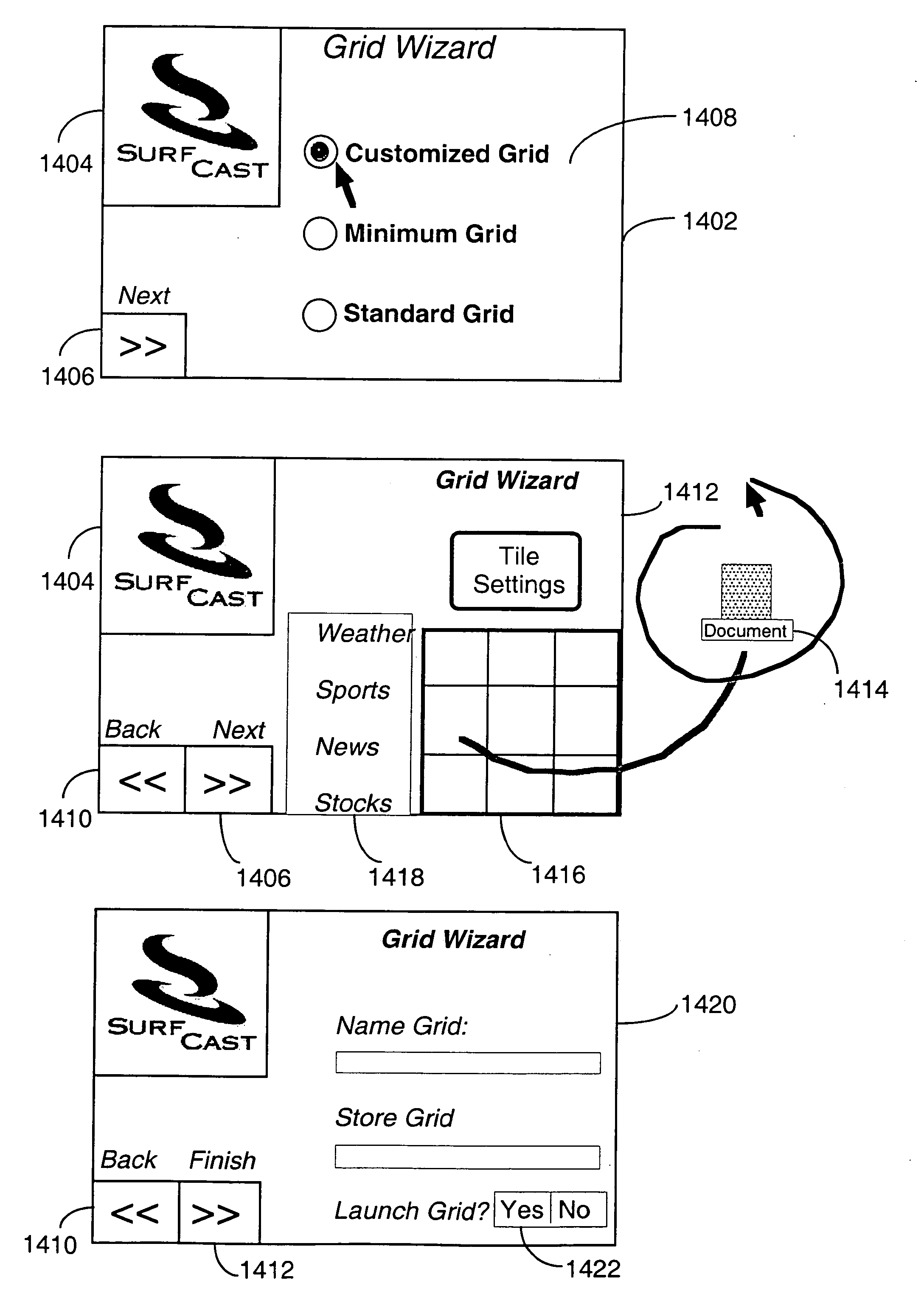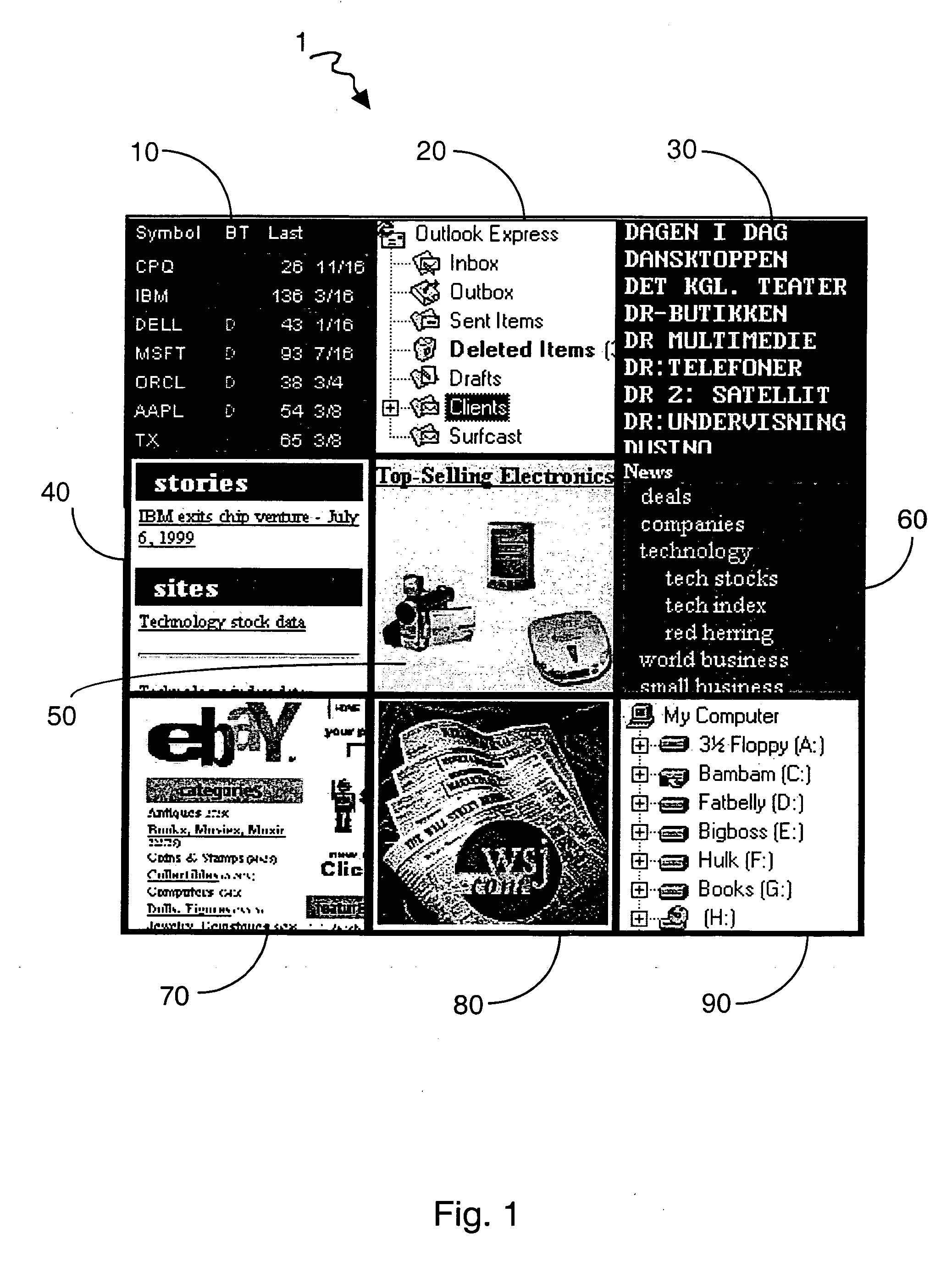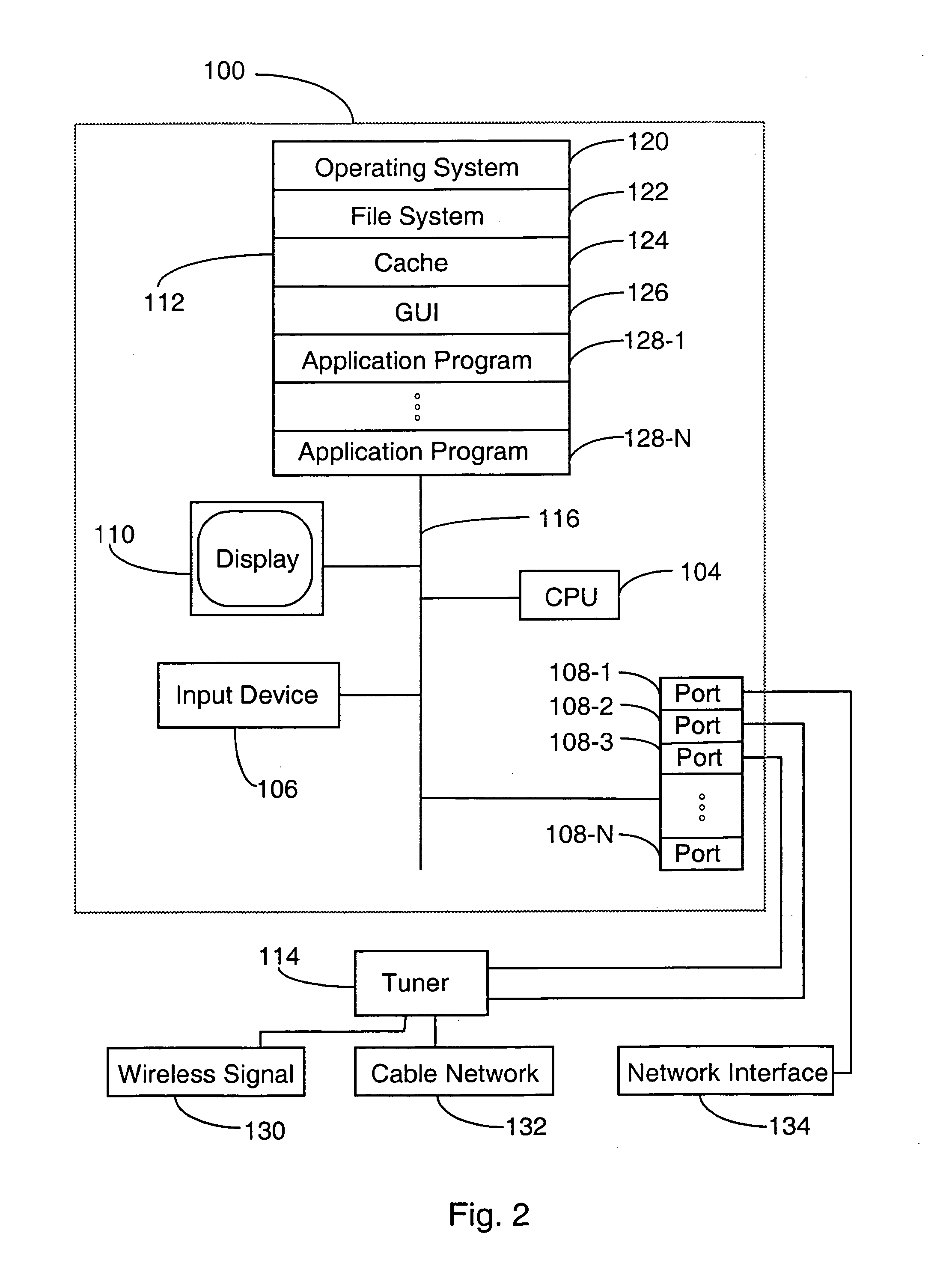System and method for simultaneous display of multiple information sources
a technology of information sources and systems, applied in the field of methods of presenting information, can solve the problems of increasing the complexity of communication devices, increasing the number of users, and increasing the complexity of systems and interfaces with which users can manage multiple sources of information, and achieves the effect of convenient organization and management and convenient us
- Summary
- Abstract
- Description
- Claims
- Application Information
AI Technical Summary
Benefits of technology
Problems solved by technology
Method used
Image
Examples
Embodiment Construction
[0053]FIG. 1 shows an illustrative configuration of the graphical user interface of the present invention. A grid 1 consisting of a 3 by 3 matrix of nine tiles demonstrates some of the different contents that tiles can display. Tile 10 points to a database of stock quotes. Tile 20 displays the active folders in an electronic mail utility. Tile 30 displays a portion of an alphabetical list of quoted companies. Tiles 40, 50, 60, 70 and 80 point to websites displaying, respectively, high technology news, electronic goods for sale, categories of business news, items available by auction and the Wall Street Journal. Tile 90 points to the file-viewer of a windows-based operating system, such as Microsoft Windows™, and displays the currently accessible disc drives.
[0054] Within the scope of the present invention, an information source may comprise any analog signal, source of digital data or a datastream, including, but not limited to, video, audio, text and graphics. The information may ...
PUM
 Login to View More
Login to View More Abstract
Description
Claims
Application Information
 Login to View More
Login to View More - R&D
- Intellectual Property
- Life Sciences
- Materials
- Tech Scout
- Unparalleled Data Quality
- Higher Quality Content
- 60% Fewer Hallucinations
Browse by: Latest US Patents, China's latest patents, Technical Efficacy Thesaurus, Application Domain, Technology Topic, Popular Technical Reports.
© 2025 PatSnap. All rights reserved.Legal|Privacy policy|Modern Slavery Act Transparency Statement|Sitemap|About US| Contact US: help@patsnap.com



